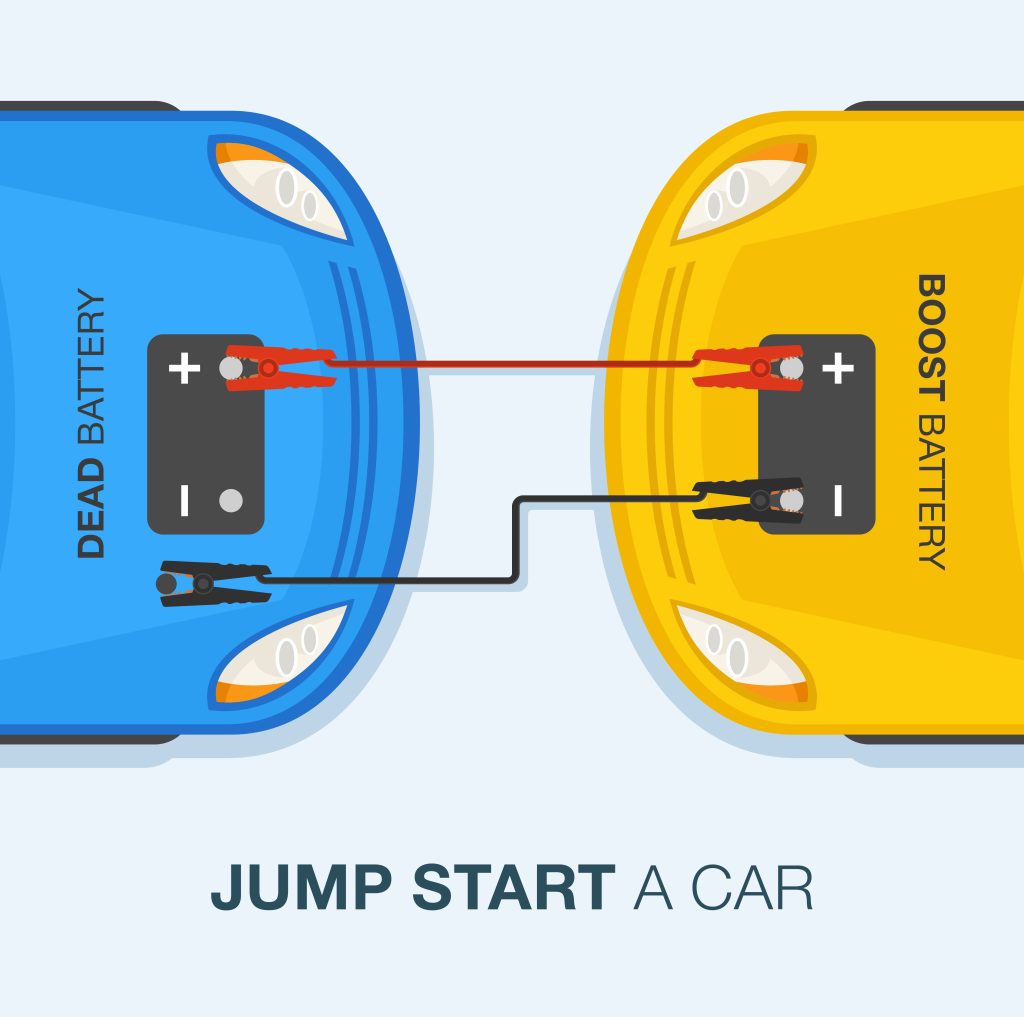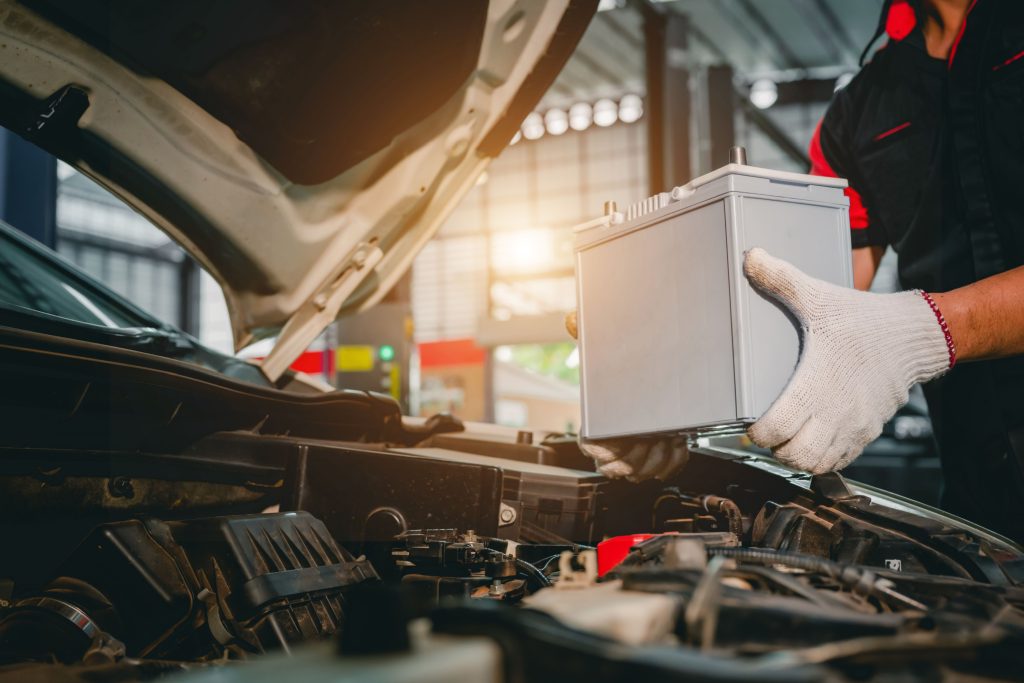
Jump-starting a car can be intimidating, but it’s really not as hard as you may think. This guide will walk you through everything you need to know about jump-starting a car. From the safety precautions to take to the steps involved, this guide is your one-stop shop for becoming an expert on how to get your vehicle back up and running in no time!
Click here to learn more about car batteries.
Step By Step Guide For Jumping A Car:
- Park the car with a working battery next to the car with a dead battery, making sure that both cars are in park and the parking brake is engaged.
2. Open both hoods and locate the batteries in each vehicle. Make sure all electronic accessories have been turned off before continuing.
3. Connect one end of the positive (red) jumper cable to the positive terminal on the dead battery and connect other end of that same cable to corresponding positive terminal of good battery; make sure cables are securely attached by tightening clamps onto each post.
4. Next, connect one end of negative (black) jumper cable to negative terminal on working/good battery and take remaining end of this same cable away from both batteries – do not attach it just yet! Place it somewhere metal such as an engine bolt or frame rail so there’s no chance for sparking if it comes into contact with any part of either car’s chassis while you’re trying to jump start your vehicle later on down line!
5. Now go back and attach last remaining black clamp securely onto negative post on dead/flat battery; again being careful not make contact between this clamp & either vehicles bodywork! You should now see sparks coming from where red & black clamps meet their respective posts –this means everything is connected properly & ready for starting sequence…
6. Start up engine first in donor car & allow its idle speed settle at around 1,500 RPM before attempting start-up procedure in recipient vehicle; then turn ignition key whilst ensuring accelerator pedal isn’t pressed too hard during initial firing-up stages – doing so might cause considerable strain upon starter motor when turning over flat/dead unit, thus increasing chances causing permanent damage…
7. Once started let run at low rpm’s until rev count rises above 2k(2000). Remove cables following reverse order they were attached initially: First disconnect Red Clamp from Positive Terminal Dead Battery then Negative Clamp From Negative Terminal On Working Unit… Finally remove Black Clamp From Negative Post Of The Dead Battery Last!!!
Jump Start A Car FAQ
1. What supplies do I need to jump start a car?
- You will need jumper cables, another vehicle with a working battery, and safety gear such as gloves and eye protection.
2. Where should I attach the jumper cables?
- The positive cable should be attached to the positive terminal of the dead battery first, then connected to the good battery’s positive terminal. Then attach the negative cable to an unpainted metal surface on your car away from its battery before connecting it to the other vehicle’s negative terminal.
3. How long do I leave my car running after jump starting?
- After successfully jumpstarting your car, let it run for at least 15 minutes so that your alternator can recharge your battery fully before you turn off your engine again.
4. Is there anything else I should check if my car won’t start even after jumping?
- If you have jumped your car but it still won’t start, there could be something wrong with one or more of its systems such as spark plugs or fuel pump which may need professional repair work done in order for them to work properly again and allow you to get back on the road safely once more!
5. Should I rev up my engine while jumping?
- No, revving up an engine while trying to jumpstart can cause electrical damage or worse – an explosion due to too much current being released at once! It is important not only for safety reasons but also because high RPMs make no difference when boosting a dead battery; just keep idle speed steady until connection is made between batteries and then wait patiently until complete charge has been transferred over in order for successful restarting process!
6. Can cold temperatures affect how well my car starts after being jumped?
- Yes! Cold weather can make it harder for batteries (both yours and donor)to transfer power effectively through jumper cables due to decreased conductivity caused by lower temperatures outside- so try keeping both vehicles parked close together during winter months in order for better connection quality between their respective terminals resulting in smoother transmission currents throughout entire charging procedure!
7. Are certain types of cars easier/harder than others when trying to jumpstart them?
- Different makes/models might require different methods when attempting a jumpstart – some newer models have built-in ‘jump mode’ allowing user access through dashboard controls whereas older ones require traditional manual approach involving physical connections between two separate vehicles with functioning batteries; always consult owner’s manual beforehand just in case any specific instructions are needed prior operation commences!
8. What kind of damage could happen if things are not done correctly when attempting a jumpstart?
Incorrectly connecting jumper cables or using defective equipment could lead potentially harmful situations ranging from sparks flying out near exposed wires all way up fire hazards associated faulty wiring – hence why precautionary steps like wearing protective clothing items like gloves & goggles are recommended as added security measure against unexpected incidents happening during this otherwise relatively straightforward task!
Looking for a new Battery? Click here to schedule service at Athens Ford Today!





